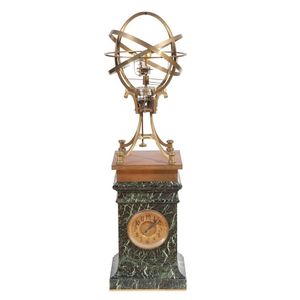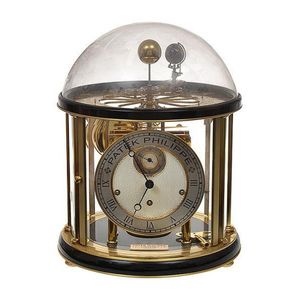
St James House Orrery Clock with Planetary Indicators
St James House Co London eight day Orrery clock of brass construction with central pointers and other indicators detailing time, calendar and six planets, mercury to Saturn orbiting the sun in real-time. The eight-day clock movement in working order,…

St James's House Orrery Planetarium Clock
A 20th century orrery planetarium clock by St James's House of London, brass construction with central pointers and other indicators detailing time, calendar and six planets (Mercury to Saturn) orbiting the sun in real-time. The eight-day clock movement…

Antique Orrery Clock by George Philip & Son, London
An Orrery, George Philip & Son, London, late 19th century, a dark green variegated marble clock base with orrery mounted to top. The clock dial with a gilded finish and Arabic numerals. Signed George Philip & Son- 32 Fleet street- London, 156 cm high, 40…

Patek Philippe Orrery Clock
A contemporary Orrery clock, made for Patek Philippe 20th century, 35 cm high

 Loading more...
Loading more...